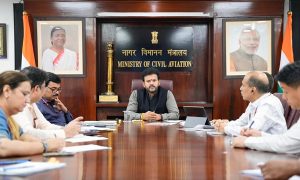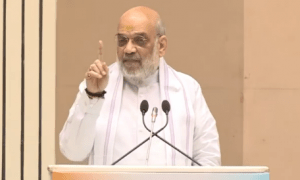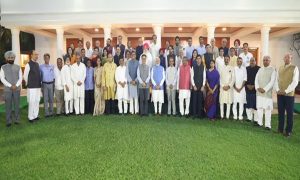“To Measure is to Know. If you cannot measure it, you cannot know it.”
With the Covid-19 pandemic looming large over the world, continuous monitoring, analyzing of viral genome variations became a useful tact to trace the path of the spread of the deadly disease. In a written reply to a question in the Lok Sabha, Union Minister for Science and Technology Dr. Jitendra Singh said that the Indian SARS-CoV-2 Genomic Consortium (INSACOG), jointly coordinated by the Department of Biotechnology (DBT), Ministry of Health and Family Welfare, has sequenced 2,01,373 SARS-CoV-2 genomes as on 23rd March, 2022.
With the view to overcome the unprecedented crisis, DBT initiated an integrated response based on extensive scientific deliberations, aligning with the R&D Blueprint of the World Health Organisation (WHO).
India’s capabilities in Genome Sequencing
The Indian SARS_CoV-2 Consortium on Genomics (INSACOG), a consortium of genome sequencing labs, came into existence in December 2020. It is a consortium of 38 laboratories to monitor the genomic variations in the SARS-CoV-2 by a sentinel sequencing effort which is facilitated by the National Center for Disease Control.
Union Minister Jitendra Singh informed that a total of 17 Covid-19 Bio-repositories have been notified by the Indian government. These are set up at laboratories of Department of Biotechnology (DBT), Council of Scientific & Industrial Research (CSIR) and Indian Council of Medical Research (ICMR).
The data collected from the genome sequencing laboratories is being analyzed to study the linkages between the genomic variants and epidemiological trends. This process helps in understanding super spreader events, outbreaks and strengthen public health interventions to further help in breaking the chains of transmission.
What is Genome Sequencing?
SARS-CoV-2, the virus behind the Covid-19 pandemic, continues to multiply, mutate and spread. Since the outbreak in 2020, researchers across the world have found multiple variants of the virus that differ from the one found in Wuhan, China in December 2019. In order to identify and know about the new strains that coronavirus mutates into, scientists are scanning samples from infected persons through a process called ‘genome sequencing’.
In simple words, the Genome is like an instruction manual that contains information about the make-up of the organism. While human genomes are made of DNA; a virus genome can be made either of DNA or RNA. Coronavirus is made of RNA (Ribonucleic Acid), a single strand of 30,000 units, that make up all its genes.
The critical role of sequencing
When a virus undergoes mutation, they replicate. The mutation is tiny errors in the genetic code that occur during the duplication process. While some are harmless, others can bring about such changes in the virus that can make it more transmissible or deadly. So, it is important to keep a track of the genomic sequencing in order to check the virulence of the virus. Sequencing is a powerful tool that enables public health authorities to improve the precision, efficacy, and efficiency of public health response.




























 WhatsApp us
WhatsApp us